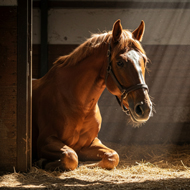Seal has ring removed after six-year ordeal
Commuter had been stuck in the ring for six years.
Medics from British Divers Marine Life Rescue (BDMLR) have managed to remove a blue plastic ring from around a seal’s neck, after six years of efforts.
The adult grey seal, named Commuter for his travel habits, was first identified in his condition in September 2017.
Commuter has been tracked by volunteers at the Seal Research Trust (SRT) since the issue was identified. However, they had been unable to engineer a rescue as he had always been resting in inaccessible locations, or locations where a rescue attempt would be impossible on safety grounds.
This was until Sunday 14 January, when SRT surveyor Andy Rogers spotted Commuter high up on a beach, with a small number of seals and an outgoing tide.
Commuter’s location was reported to the BDMLR, who began to assess the circumstances of a rescue.
Adult seals are considered risky to capture, due to their defensive behaviours and weights of over 200kg. Commuter’s capture required experienced handlers and specialist equipment to secure him before he escaped into the sea.
Initial attempts at a rescue were put at risk when visitors managed to disturb some of the seals, causing a third of the seals to stampede into the sea away from them. Throughout this, Commuter remained asleep.
A team of six medics were able to stealthily enter the cove, bringing equipment needed to approach and hold him.
They used a cargo net to block Commuter’s escape, while a herd board kept two other adult males away from rescuers. During the stand-off, the rescuers wrapped him in the net and held him with a stretcher to assess his injuries.
The plastic ring was found not to have cut in to Commuter’s skin too deeply, so his rescuers were able to cut off the ring, disinfect the wound, and release him back to the sea.
Commuter quickly sped off into the water, and was soon spotted resting in the water just offshore.
Andy Rogers, the SRT surveyor who first spotted him, said: “I am so happy. I would like to thank everyone involved in this major operation.
“Not only was it a huge success for Commuter after more than six years entangled, but also for the BDMLR rescue team who were able to catch their first ‘healthy’ adult male seal using a new technique.”
Thumbnail image © Andy Rogers
Image © Julian Larbalestier and Andy Rogers



 Zoetis UK has called on horse owners to complete a short online survey about their horse's behaviours.
Zoetis UK has called on horse owners to complete a short online survey about their horse's behaviours.